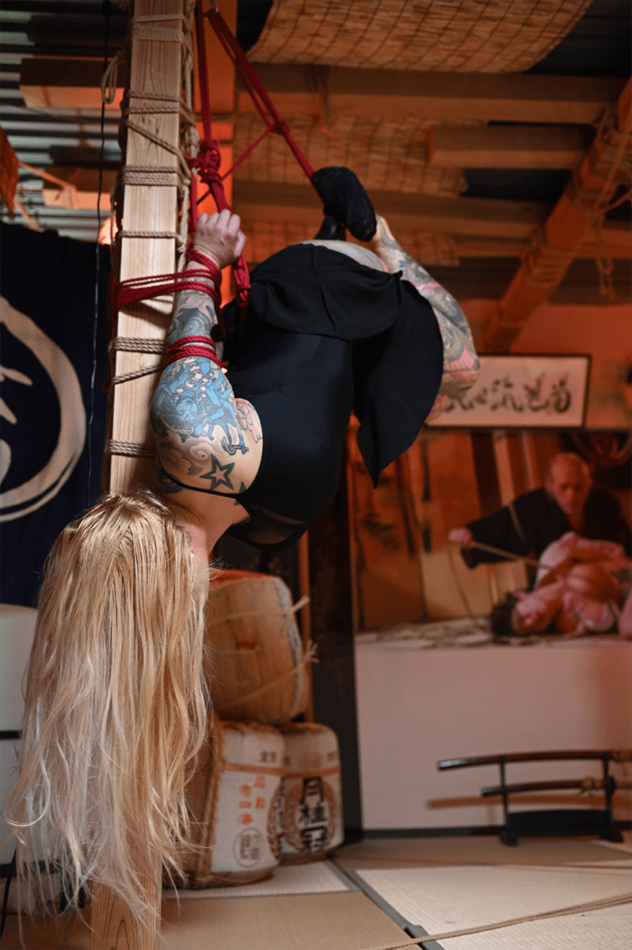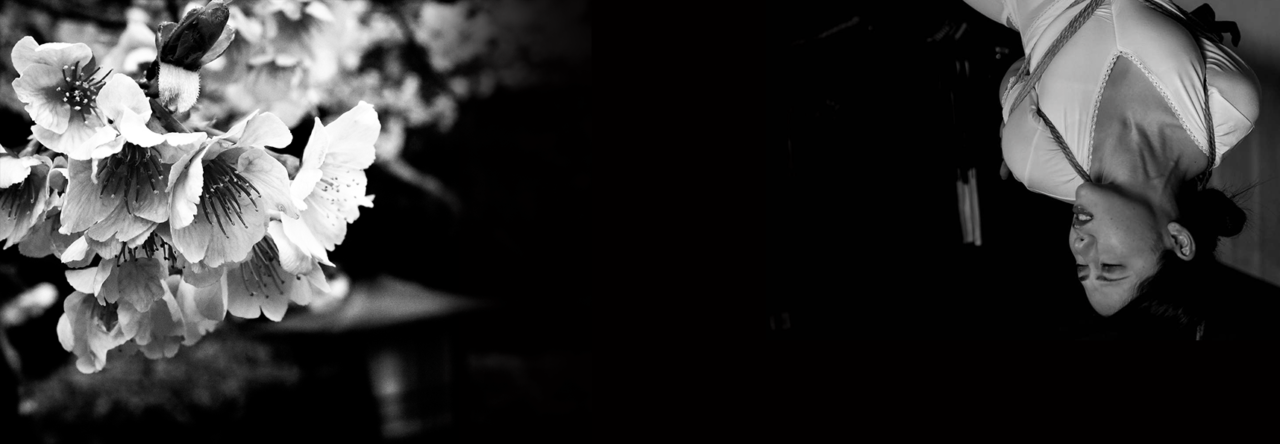Hashira means “pole” or “pillar”. It includes a whole group of shibari patterns, all of which are done on an upright pillar or beam. Combinations of an upper body pattern and a hip harness are usually used. Many different poses are possible once a solid structure is made for hanging. Hashira patterns are from the advanced range and are taught only in the second third of the training.

Inverted suspension with strappado. In addition to the pose, the weight distribution between the arms and the waist rope is crucial, so that a secure suspension is created. The Hashira should also not be too close to a wall, so that there is enough space to work on the other side. The ideal width of the Hashira is 10 to 21 cm, so that the support surface and the stability of the Hashira is maximized.
Upright Hashira techniques can be combined with any upper body pattern. The more free space there is, for example, on the legs, the more possibilities you have for visual design.
Due to the high technical demands, it is particularly difficult to maintain communication with the partner. In addition, the column restricts the range of motion. The back of the patterns are not so easily accessible. It is also important to bring the body as close as possible to the column so that the pose remains graceful and upright.

Traditionally, Japanese houses are built as wooden beam structures. These beam structures resemble European half-timbering. However, these beams are often freestanding within the rooms. Hence comes the possibility of creating corresponding patterns traditionally. The association with a traditional Japanese farmhouse, a minka (民家) are the stated goal here.



